As part of the series of articles about digital tools for empowering our craft brand, today I want to talk about the importance of a presence on social media.
You’ll learn how to develop a good social media plan that will enable you to achieve great results and position your business as one of the most active on social media in the beverage sector.
Online marketing is a subject that provides enough material for a long and detailed discussion. In the first part, we will focus on Craft Beer Marketing — the points you need to take into account before preparing your strategy, and how the new online environments make it possible to carry out small actions at a lower cost.
In the second article on this subject, we’ll analyse, one by one, the best-known platforms on which our brand needs to have a presence, how to position it and make it memorable in a context as competitive as this one.
Social media, a first contact with your craft brand
There’s no doubt that social media platforms are the most direct means by which users learn about our brand or business. Besides being a showcase in which to display the best of ourselves, they allow us to have a direct relationship with and receive feedback from our followers. Which is another reason to give the audience corporate content that is visually attractive and unique through the various channels.
Nonetheless, not all platforms are capable of connecting with the right audience. Therefore, we first need to analyse where we want to be. Many companies make a great effort to distribute the same content on all the platforms and ultimately realize that their strategy doesn’t work.
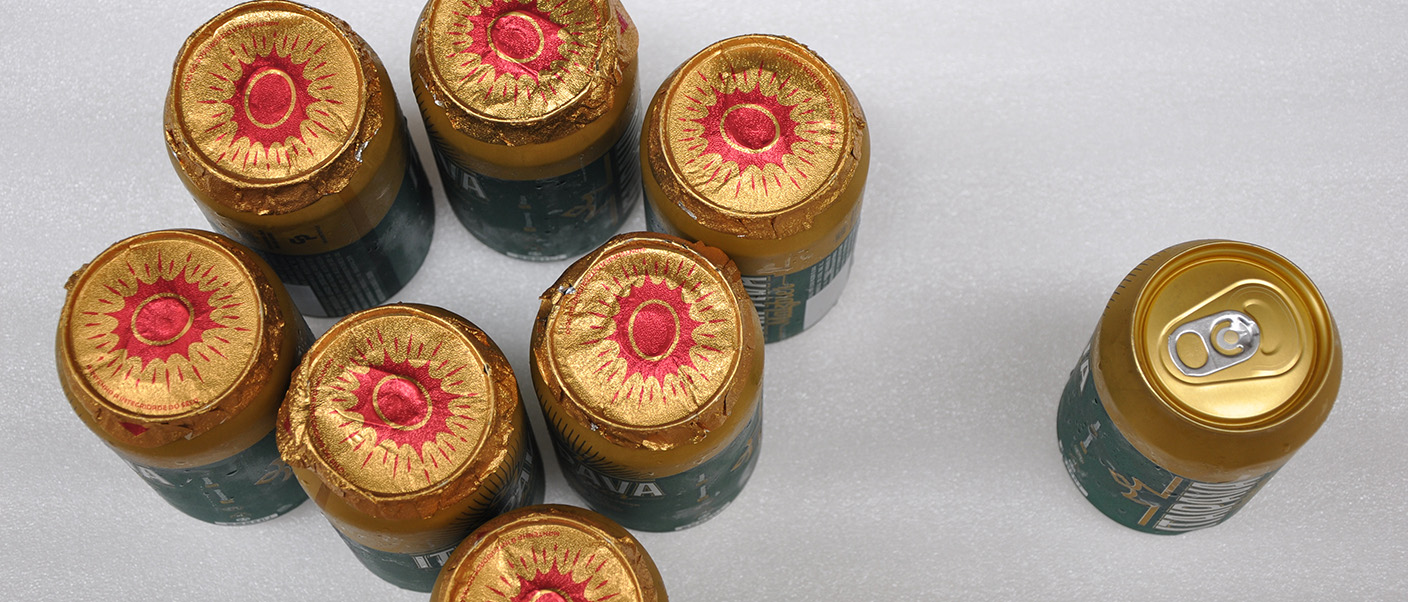
But it’s important to reconsider what we are going to display, in what manner and the sites where we will place the focus.
Content is king
The type of content we are going to prepare and disseminate on social media is the determining factor for any social media strategy centred on beverage production and the craft world. It has to be very top-quality and, in displaying it, it’s important to think about:
- A blog and a corporate website to which to redirect users. We will be able to tell our story and talk about our work philosophy, the human team, our facilities (equipment and technology), ingredients and results, the various products, the latest news and market trends, or who our customers are.
- The manufacturing processes and products. People love to see how we work, our day-to-day routine, how beer and other beverages are produced, in addition to being able to explore the different designs and labels.
- Events. The degree of engagement and commitment of a brand or any company with the sector develops and culminates through meetings and professional events.
Which platforms do we need to be on?
Once we have a clear idea of the content, the next factor to consider carefully is our target audience and which platforms are best known, or at least work best, in our market niche.
The beverage sector, very linked to B2C (Business to Consumer), needs to be narrowed down a bit more, given that professionalization and specialization are the basis for designing a social media strategy.

1. Facebook, the XXL platform within the social media universe.
One of the fundamental reasons why we have to rely on the social media platform of the “like” is because millions of registered users belong to it, and it also owns other gigantic platforms (Instagram, WhatsApp and Messenger), with the endgame being to integrate them seamlessly.
One of the latest reports, dated 19 October 2020, from DataRePortal on the status, analysis and trends of usage of the world’s most popular social media platforms reveals that Facebook leads the ranking with 2.7 billion active users.
Despite the fact that for some time now and in order to be visible, they require us to pay them through different Ad campaigns, it’s still interesting to upload content periodically. It gives us considerable leeway in personalizing our Business page and launching other engagement posts, as well as for announcing news, events or contests.
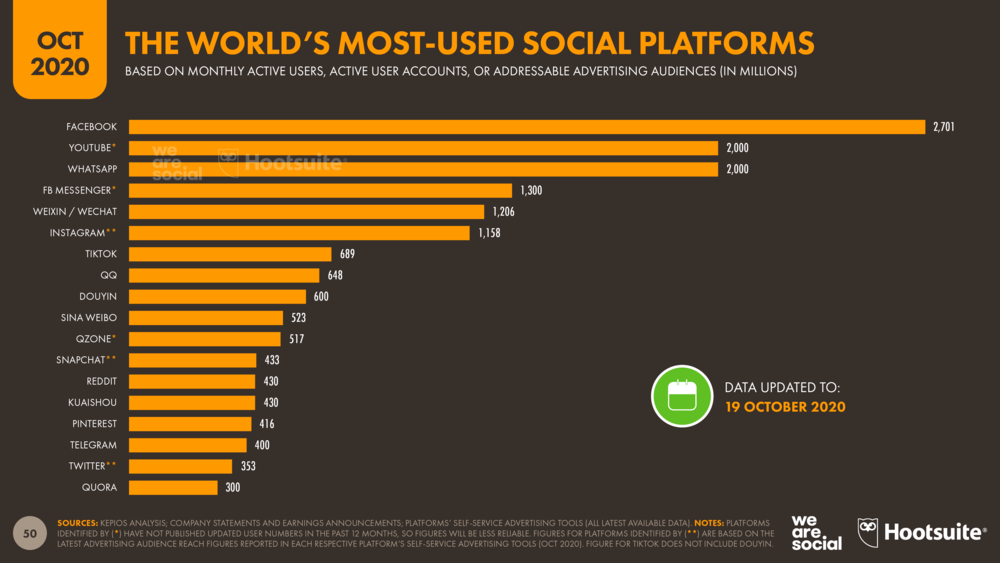
2. YouTube
Any B2B company in the craft world should think about including YouTube in its social medial strategy. By number of users, it’s not far behind Facebook. It holds second place with 2 billion monthly active users. A number that’s interesting enough for us to consider uploading and viralizing videos from time to time, whether this be about our processes, some event we’ve attended, or even with a basic tutorial of some sort.
3. Instagram
Farther down the list, specifically in sixth place with 1.16 billion active users, is the most visual of the social media platforms, Instagram, below other messaging platforms like WeChat (taking into account that its market is the enormous population of China) or WhatsApp, which can work very well for our customer service communications.
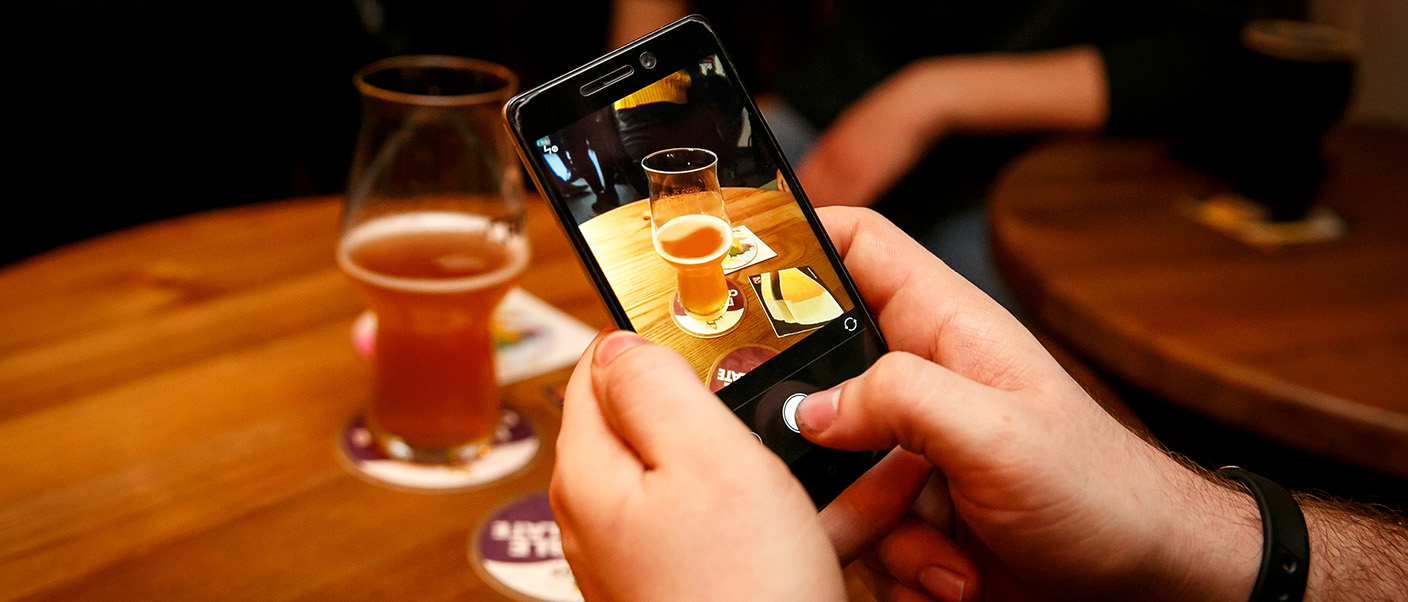
Instagram will help us to show the most attractive and visual side of our business. Its format has a monopoly on the engagement of millennial users, and it’s capable of attracting attention through any sequence of images, reels, video stories, etc.
4. LinkedIn, indispensable for B2B in the craft sector
Our business image and purely professional relationships are produced within a professional network like LinkedIn. It sidesteps the most powerful market precisely because it focuses on companies and professionals, but let’s say that it will be our best megaphone for any communication of an institutional or corporate nature. Lately, with the aim of not being left behind, it has been developing its functionality more and more. If a year ago it was quite limited, it recently launched a new stories service with functions very similar to those of Instagram or Facebook Stories.
5. Twitter, for discussion
Twitter is the live social media platform. We can give it more life in terms of the craft and beverage sector to discuss events live or support more effective actions on other platforms
6. If we want feedback from users, we need to use Untappd
Untappd is one of the best-known beer rating apps. At certain times, it can be very useful for us to get a feel for its followers’ ratings of certain products.
7. TikTok, Pinterest y otras plataformas
Although TikTok is just below Instagram and climbing, at the moment it’s still a bit far from being able to meet our expectations and deliver results in any social media strategy.
It serves a market with an audience that generally very young, off our radar, and is used to upload music videos. Therefore, it should be ruled out for any professional action. Although it made a very strong start, as in the case of others like Snapchat, its fall may be just as fast.
Pinterest is a bit of a fashion showcase for disseminating trends and ideas and selling products. So, our presence on Instagram can take its place and be used to strengthen any craft brand action.






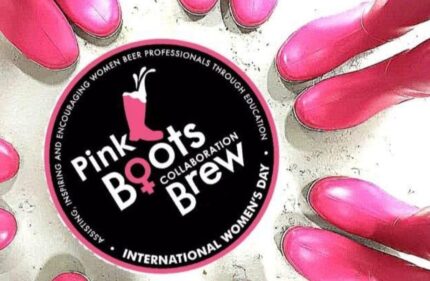
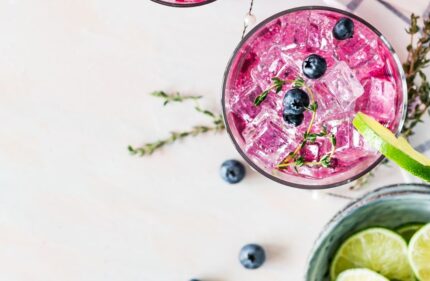


Comments